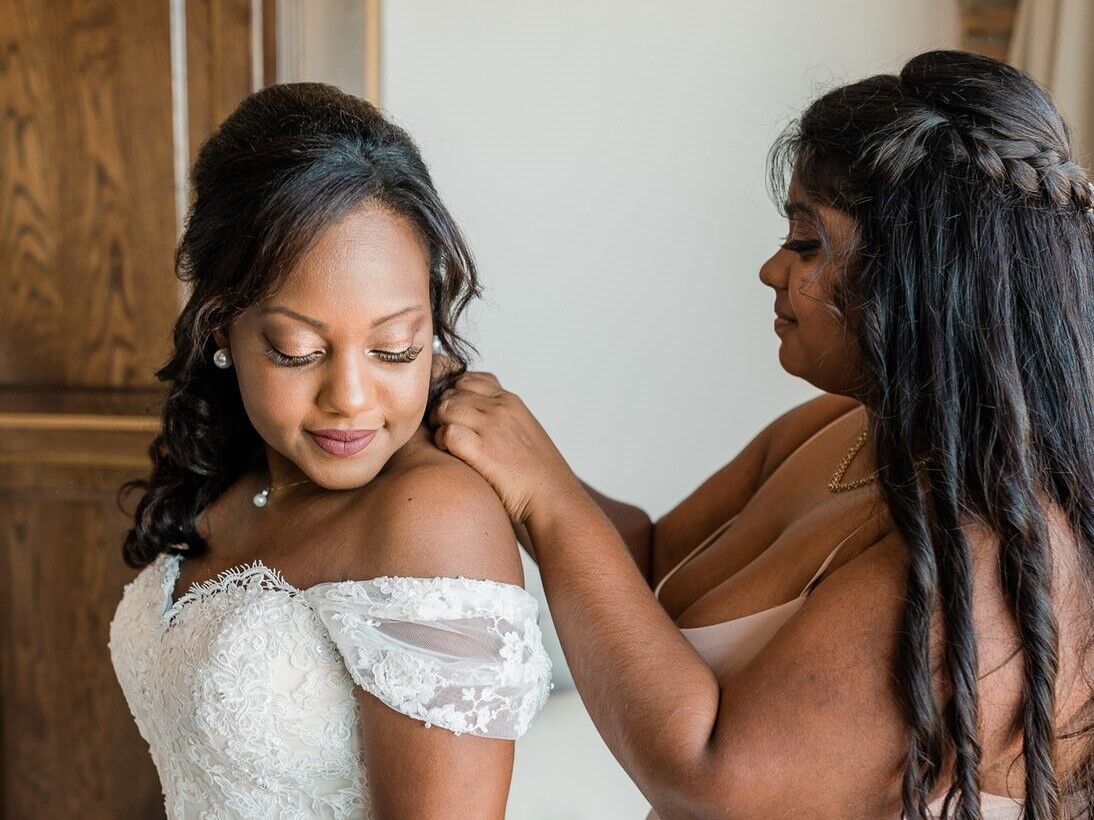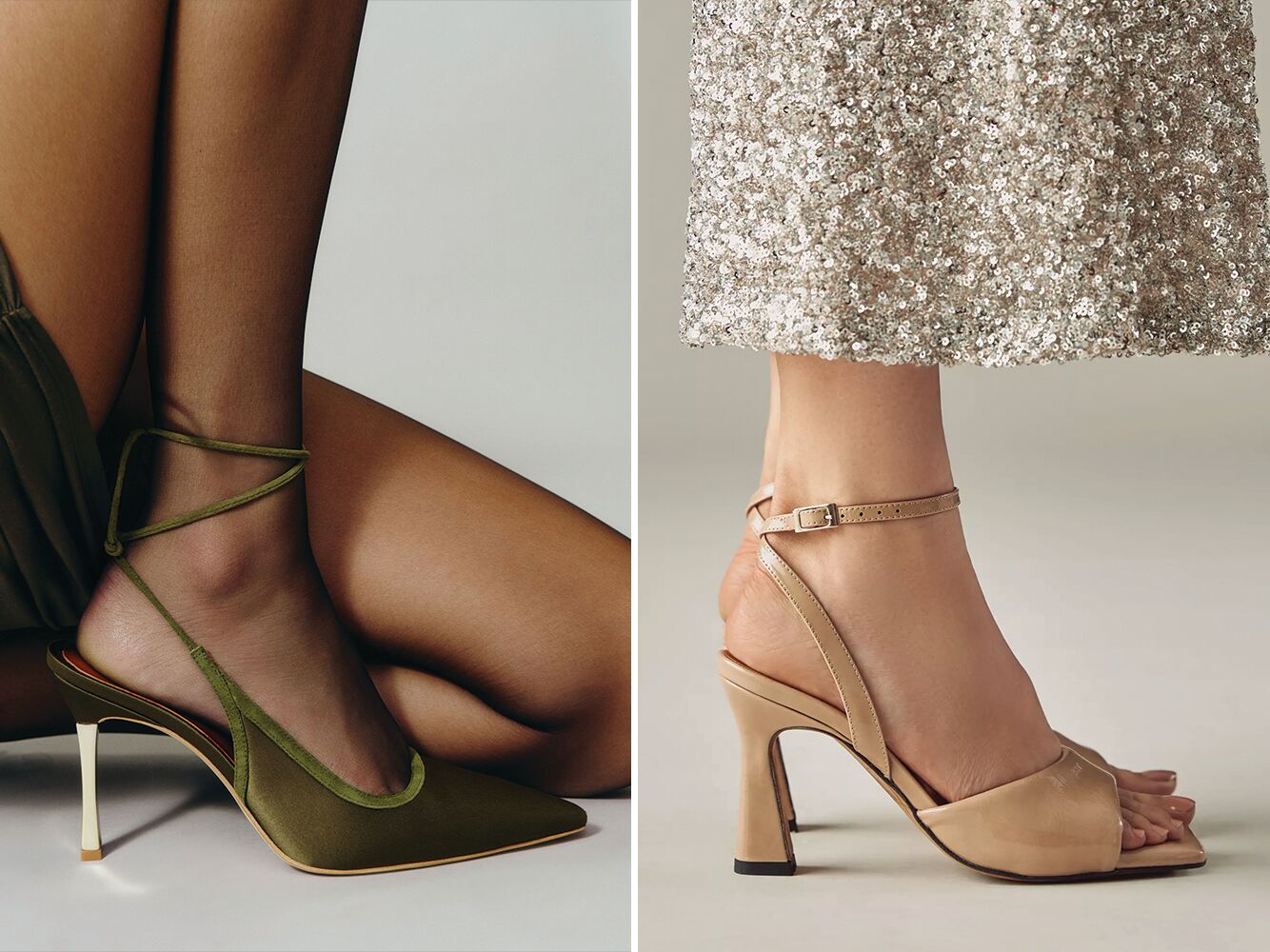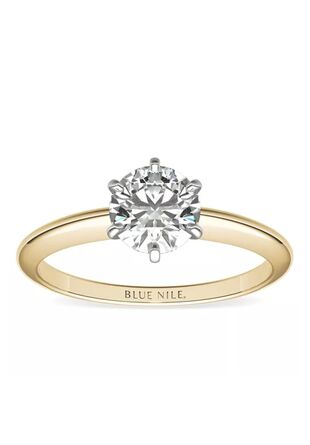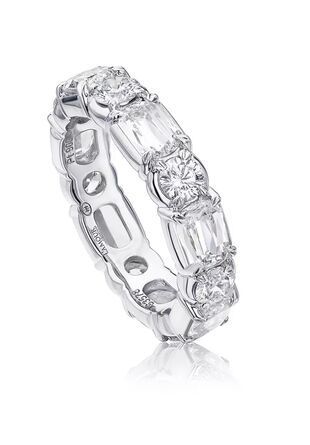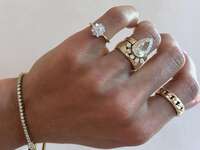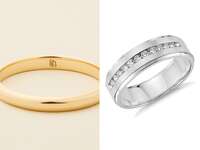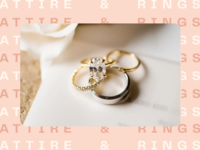Are Inexpensive Wedding Rings a Bad Thing? Jewelers Share Cost-Saving Tips
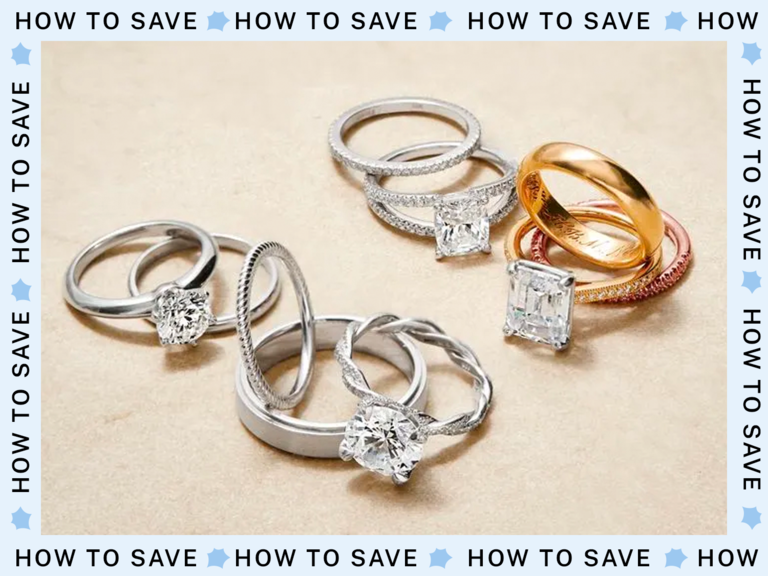
Everybody loves a deal, and there are certainly ways to save money throughout your wedding planning journey. But is buying a wedding band one of them? Well, it depends. Some inexpensive wedding rings are actually quite durable—especially in the men's category, where titanium and tungsten are on trend. But others can come at the expense of quality, and you don't want to sacrifice on something you'll be wearing day in and day out.
For more insight, we tapped the experts. Claire James is the executive general manager of merchandising for Australian fine jewelry label Michael Hill; Matt Harris is a GIA graduate, pearl specialist and consignment jeweler behind Matt Harris Designs in Austin, Texas. Here, they help break down the pros and cons of so-called "inexpensive" wedding rings (it's a relative term, after all) and offer a few cost-saving tips to make your dollar go further.
In this article:
- What is Considered an Affordable Wedding Ring?
- Are Inexpensive Wedding Rings a Bad Idea?
- How to Shop for Inexpensive Wedding Rings
What is Considered an Affordable Wedding Ring?
The term "affordable" is, naturally, very flexible and vague: What's easily affordable for one couple may be out of reach for another. It all has to do with personal budget or the budget of those helping cover the wedding costs. But, for reference, let's take a look at the averages.
According to The Knot 2023 Engagement and Jewelry Study, the average ring cost of a women's wedding band is $1,200, and the average cost of a men's band is $600. It's worth noting that the average men's band cost has gone up gradually in recent years (from $510 in 2019), perhaps due to the rising cost of gold or the trend of diamond accents in men's bands. Women's band prices have stayed more stable and get more expensive with the addition of diamonds or other gemstones. James sets a range of about $1,000 up to more than $5,000 for women's bands.
"Determining your budget comes down to what kind of design you prefer and what matches your style and personal preferences," she says. "There are some important factors to consider, like the diamond weight or type of metal you opt for. Your wedding band should be meaningful to you and your partner and practical to your lifestyle." Work together to set a realistic budget (you can start by using The Knot Budget Advisor tool).
Are Inexpensive Wedding Rings a Bad Idea?
Inexpensive can also be a vague term, as it is different for everyone. No matter your budget, there's an obvious pro to rings you consider inexpensive: They don't weigh as heavily on the wallet, allowing you to put your money toward other wedding costs or save for future life expenses.
But there can be cons to dipping too far below budget for something as forever as a wedding band. You'll be wearing this every day, so it needs to be durable—and durability is sometimes sacrificed to lower costs. "The two problems I see arise most often from low-budget wedding bands are thickness and workmanship," Harris says. "Fingers aren't perfectly round and gold is somewhat soft, so when you add a thin band to the equation—thin bands cost less because there is less metal in them—you'll see it bend quickly. If there are diamonds in the band, this change in structure can actually pop out the diamonds and you'll be left with a repair that can cost as much as the ring." Avoid anything under 1.6mm or 2 mm to be safe.
"There are some affordable alternatives to traditional precious metal wedding bands, but they also come with cons," James adds. For example, "wedding bands made out of tungsten or titanium cannot be resized." In general, though, you can get really special and beautiful wedding bands for relatively reasonable prices, especially compared to engagement rings that feature an expensive center stone.
How to Shop for Inexpensive Wedding Rings
Let's reframe this: Rather than looking specifically for affordable wedding rings or bands, consider ways you can save on the more expensive styles you love. Here are a few ideas of what to look for and where to buy inexpensive wedding rings.
Look at Alternate Materials
According to James, men's diamond and gold or platinum rings typically start around $1,000—but there are other ring metals to consider. "Men's alternative metal wedding bands start from $185 in black titanium, $200 in tungsten or $85 in silver," she says. "Alternative metal wedding bands like black titanium and sapphire tungsten are great options for an entry-level price point and a popular choice for someone looking for a durable and more scratch-resistant wedding band." Black titanium has another pro: It's hypoallergenic and great for anyone with metal allergies. Trending sapphire tungsten has a luxe look and a dark gray tone. "It is exceptionally hard and scratch-resistant and will retain its luster for a long time," James says. Talk to your jeweler to make sure you know the pros and cons of your chosen metal. While both titanium and tungsten are great materials for rings and hold up to wear and tear, they cannot be resized.
Customize Your Band
Women's bands are a little more creative and versatile; there are countless styles and options to choose from. Here's where customization can actually save you money. Find a style you love, then work with a jeweler to incorporate cost-saving alternatives, such as lab diamonds in place of natural ones or stones in a half-eternity wrap instead of all the way around. "Fancy diamond bands can be customized to suit individual budget and design preferences," James says.
Consider Consignment
"Price wise, a buyer can easily save 50% or more by buying a ring from a consignment shop; in some cases, the rings aren't priced much above the cost of the materials," says Harris. "In my experience, the average cost of a ladies' wedding band with some diamonds on consignment is about $400 to $500, depending on the amount of metal, type of metal and amount of diamonds. Shopping consignment for men's bands is also a wise strategy. Most men's bands are simply metal with no stones and a good consignment shop has the equipment and know-how to polish them up to look like new." He adds one caveat: Working with a trusted source is paramount. "The key is buying from a source that knows how to evaluate both the gems and the metals to make sure the diamonds are really diamonds, that the quality justifies the price, and that the metal is what they say it is."
Note that consignment stores don't just offer vintage. "You can find both modern and vintage style wedding bands on consignment," Harris says. "We never know what's going to walk in the door. It might be a ring that great-grandma owned and passed down, or it can be a brand name that's sold today down the street at the big jewelry store. People have different reasons for selling jewelry at different times, so it's all over the map."
And anyway, he adds, there's something quite romantic about choosing a wedding ring that's been consigned. "Who owned it? What was the day like when they received it? Where did they go, and what did they do?" Harris says. "We'll never know, but it's neat to think about. I tell people who are consigning with me that their ring is going to make someone happy all over again. The ring will likely outlast us all, gathering stories that we can only imagine." Why not add your own story to the list?


